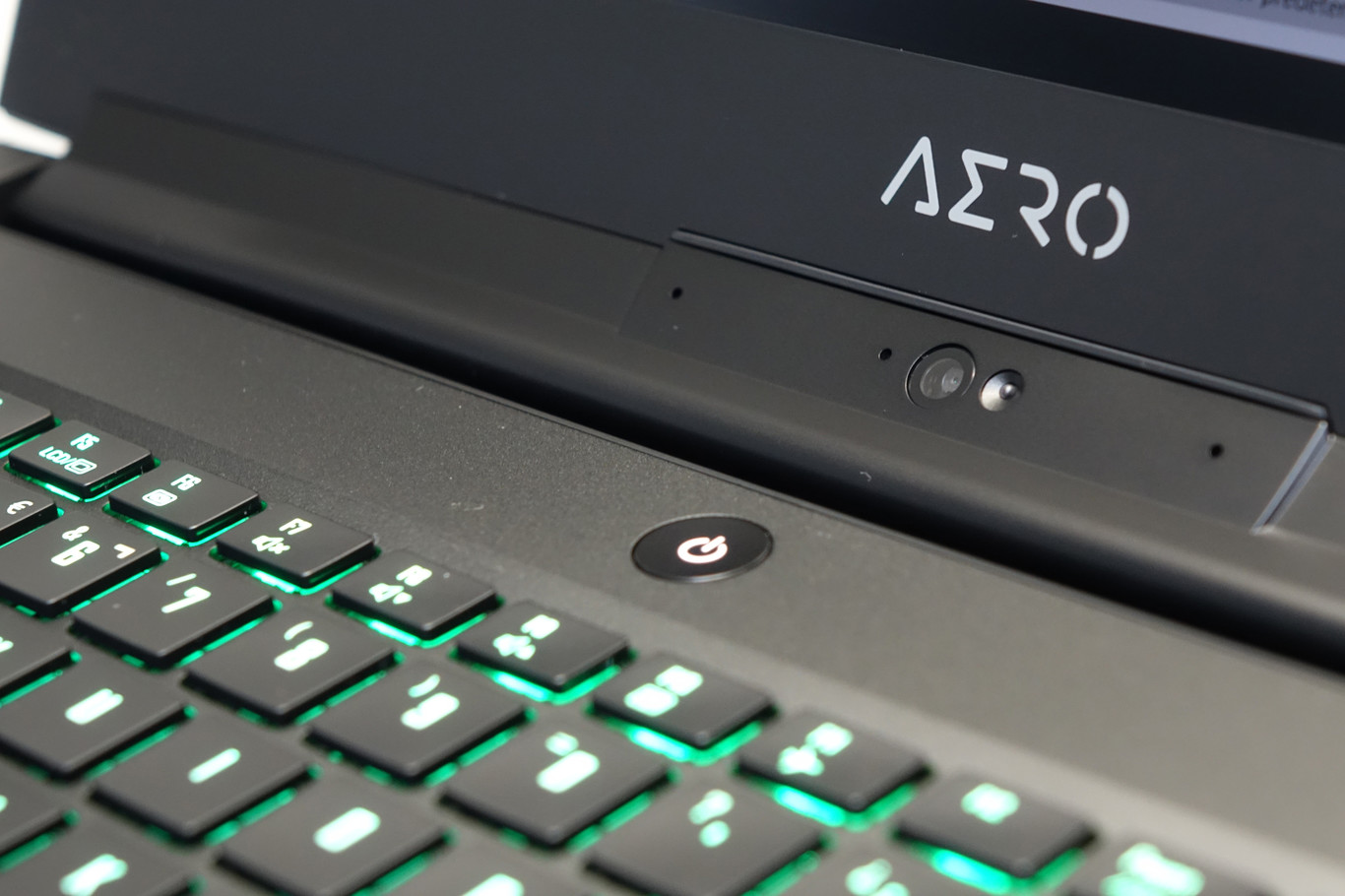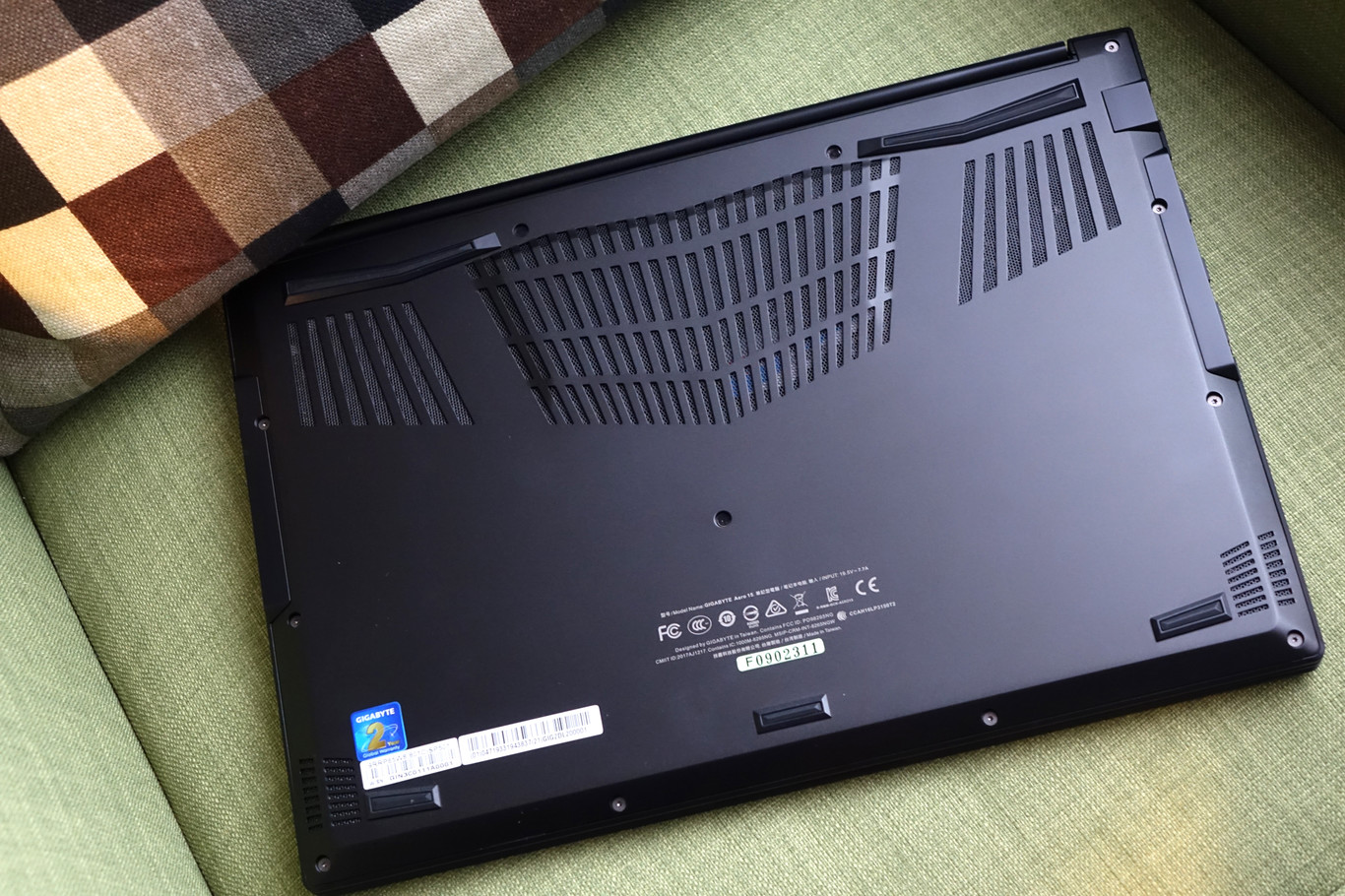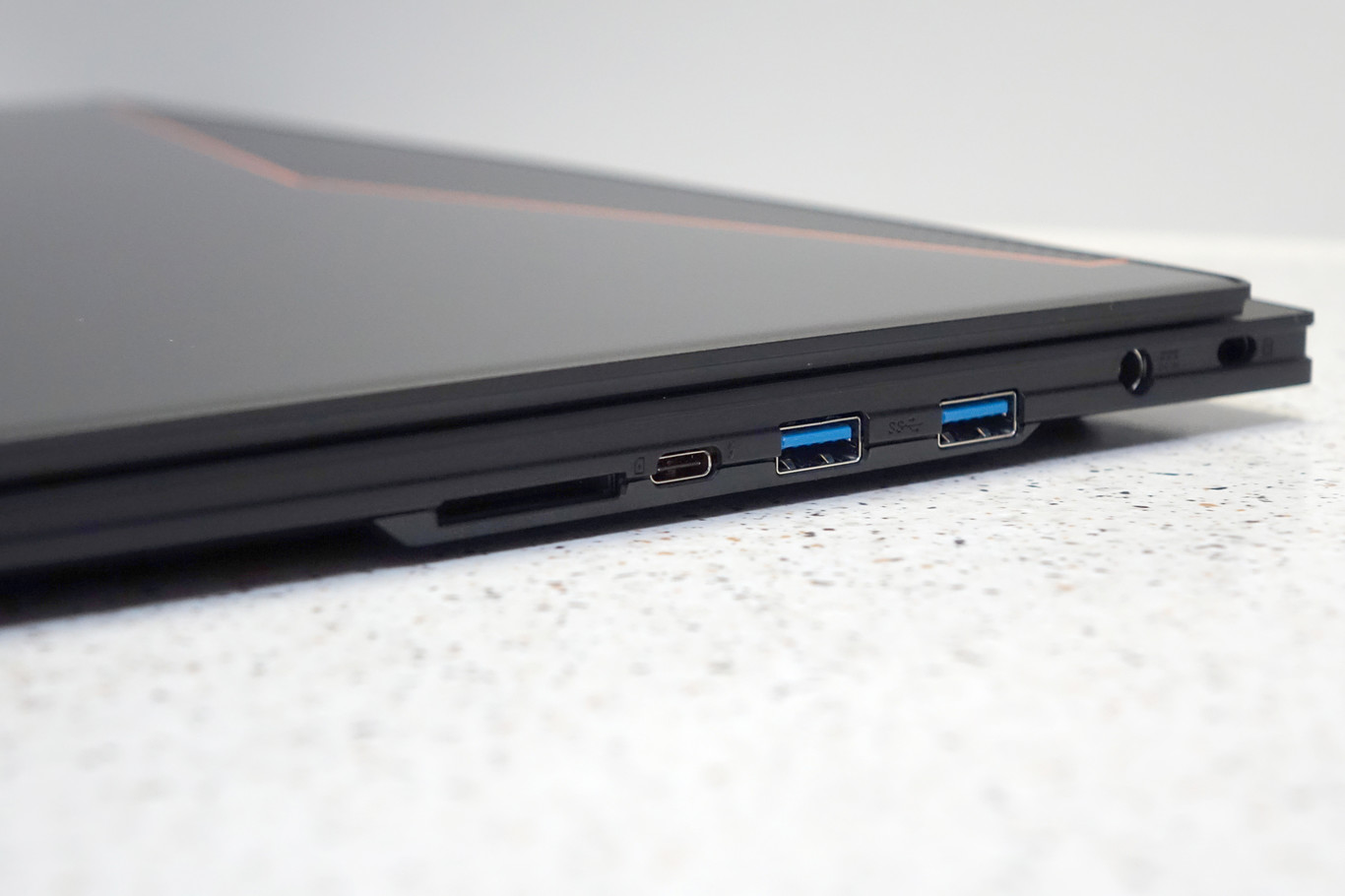This laptop reminds us that in the world of hardware we should not get carried away by appearances. As you can see in the image that opens this analysis, its chassis is stylized and its design is sober, which a priori can cause us to catalog it as a team with a professional vocation in which portability and a marked aesthetic seriousness act as the main claim. Nothing is further from reality.
Just take a look at its specifications to realize that, regardless of its design, this Aero 15 Gigabyte is a laptop for full-fledged gaming. In fact, as we will see throughout the article, it is that measured balance between a stylized and sober chassis, on the one hand, and a configuration “with muscle”, on the other, which allows this team to clearly stand out from other laptops. games And, in addition, it arrives with important novelties if we compare it with previous proposals of the Aero range. Let’s see what it offers us …
Gigabyte Aero 15: Technical specifications

Gigabyte engineers have done their homework. And is that this revision of the Aero 15 maintains the most attractive features of the previous model, but also includes very juicy novelties that place it one step ahead of its predecessor. Among the most interesting specifications that share both versions we can highlight its IPS LCD panel with X-Rite Pantone color calibration certificate, a screen with a bezel of only 5 mm, a chassis mostly made of aluminum with an impeccable machining, a keyboard good quality with RGB backlight, and, last but not least, a powerful NVIDIA GeForce GTX 1060 GPU powered by 6 GB of GDDR5 memory.
Let’s now with the new features of this review of the Aero 15. Without a doubt, the most striking is the Intel Core i7-8750H microprocessor of eighth generation, in which we will deepen later, but there are more interesting changes. The native refresh of the integrated IPS LCD panel in this equipment amounts to 144 Hz, a very attractive improvement that supports the vocation of this equipment’s gaming machine.
In addition, the DDR4 memory works at an effective clock frequency of 2666 MHz compared to 2400 MHz in the previous revision. And the new Aero 15 includes Dolby Atmos sound, although, unfortunately, we have not been able to test it because the sample that Gigabyte has sent us does not incorporate it. Here you have your specifications in great detail …
| GIGABYTE AERO 15 | |
|---|---|
| SCREEN | 15.6-inch IPS Full-HD Anti-reflective LCD (1,920 x 1,080 dots) 144 Hz with X-Rite Pantone color calibration certificate |
| SIZE | 356.4 x 250 x 18.9 mm |
| WEIGHT | 2.04 Kg |
| PROCESSOR | Intel Core i7-8750H eighth generation (14 nm, 6 cores / 12 threads, 9 MB L3 cache, base frequency of 2.20 GHz / maximum frequency of 4.10 GHz and TDP of 45 watts) |
| GRAPHICS | NVIDIA GeForce GTX 1060 (6 GB GDDR5) |
| RAM | 16 GB DDR4 (2666 MHz) / 2 x 8 GB SDRAM |
| STORAGE | Crucial SSD 512 GB NVMe M.2 |
| OS | Windows 10 Home |
| WIRELESS CONNECTIVITY | WiFi 802.11ac and Bluetooth 4.2 |
| BATTERY | Lithium polymer / 94.24 Wh |
| PORTS | 2 x USB 3.1 Gen1, 1 x USB 3.1 Gen2, 1 x USB-C, 1 x HDMI 2.0, 1 x mini-DisplayPort 1.4, 1 x RJ-45, SD card reader and 1 x headphone / microphone jack |
| PRICE | $2149 |
A whole Intel Core i7 eighth generation

We really wanted one of the first laptops equipped with an Intel Core 8-generation microprocessor (Coffee Lake) to fall into our hands, and this Gigabyte team has put it on a platter. Although its Core i7-8750H CPU has been manufactured using the same 14 nm lithography used in the previous generation microprocessors, known by the code name Kaby Lake, it incorporates several very interesting improvements, especially in regard to its parallelism, that should leave a trace in a clear way in the performance (we will check it in the section that we dedicate to our bank of tests).
The “brain” of this laptop has a total of six physical cores and can process concurrently a maximum of 12 threads, so you should perform superbly in applications that benefit from a high degree of parallelism (later we will check how it goes in Cinebench R15). But here the interesting does not end. In the capture you have below this paragraph you can see that its level 3 cache memory, which, unlike the caches of level 1 and 2, is a space shared by all the cores, has a capacity of 9 MB, which puts it one step ahead of the Core i7 chips of the previous generation, which had an L3 cache that ranged between 8 and 4 MB depending on the model.
A section that we must not lose sight of in this new chip is its TDP (Thermal Design Power). This parameter tells us, on the one hand, how much a microprocessor consumes, and, on the other hand, also how much energy dissipates in the form of heat. According to Intel, this particular model has a TDP of 45 watts, which means that it consumes that energy when all the cores are active and working at the base clock frequency (2.20 GHz). However, the CPU can also work in the TDP-down mode, that reduces the consumption until an interesting 35 watts (and also, logically, the energy dissipated in the form of heat), although to make it possible it is necessary to reduce the number of active nuclei or the clock frequency at which they work. And this can have an impact on performance, the amount of which will depend on the applications we are using.
Continue Reading: Gigabyte overclockers upgrade to Intel Core i7 ‘Kaby Lake X’ up to 7.5GHz
Design and finishing

This is one of those laptops that enter through the eyes. The machining of its chassis, which is mostly polished aluminum, is impeccable (note that Gigabyte uses numerical control cutting machines). Nothing to object in this area. Even so, the most striking thing is that the top and side frames of the screen have a thickness of only 5 mm. Yes, you read correctly: 5 mm of frame in a gaming device.
This is one of the sections that I always criticize in the gaming laptops that I analyze because frames are often excessive, contributing to significantly increase the size of the chassis. But this Aero 15 has a very stylized design. And it is appreciated. Oh! And its thickness, 18.9 mm, is also restrained, which together with a weight of about 2 kg gives a very interesting portability to this team.
Let’s go now with the always important hinge. As you can see in the following detail photograph, the engineers of the Taiwanese brand have opted for one of a very respectable size instead of two smaller hinges, which is the other usual option. This design decision gives this element greater robustness and mechanical resistance, so I think the best option.
In addition, the resistance of the hinge to the opening is adequate to allow us to open the equipment when it is placed on a table without the need to hold the screen with one hand and the base of the PC with the other. We just need to grab the screen with one of our hands, and that’s it. The base will not move from its location, even if we do not touch it.
A final design decision in which it is worthwhile to stop for a moment has to do with the location of the webcam. And in this laptop does not reside in the upper frame of the screen, but it does in the bottom, just above the hinge. Of course, as you can see in the following photograph, it is placed on a slightly inclined plane that allows us to correctly collect the images of our face.
On a practical level the location of the webcam does not have much importance, but from an aesthetic point of view it is important because, if it had been placed in the upper frame, it could not have that profile of only 5 mm.
144 Hz FHD display: Perfect for gamers

We now come to one of the most interesting novelties of how many Gigabyte has introduced in this model compared to the previous version of the Aero 15: the IPS Full HD LCD screen with a native refresh of 144 Hz (the previous model was in about more measured 60 Hz). This characteristic reveals its vocation as a gaming machine , that is obvious, but no more inquiring into the screen of this PC would cause us to fall into an oversimplification.
And is that this laptop does not incorporate a screen for more games. It does not do so because it has obtained the X-Rite Pantone color calibration certificate, which, in theory, guarantees that the panel is capable of restoring a wide range of colors and faithful to the idea of content creators. This feature may be interesting for those who, in addition to using their laptop to play and run office applications, also use it to retouch photographs and edit video.
Even so, apart from this certification, I opted to analyze the panel’s features using the two tools I have used for years: DisplayMate and Nokia Test. Yes, a few minutes were enough to make sure that, indeed, this laptop incorporates one of the best screens, understanding as “screen” the binomial formed by the panel and factory calibration, of how many I have tested in gaming equipment that I have dissected during the last years.
Indeed, its performance in terms of colorimetry is outstanding. But this is not all. Its black is deep, in fact, it seems to me comparable to that of the high-end professional monitors that I have analyzed. And, as regards the information that is able to recover from dark areas, more of the same, which reminds us of the importance of having a meticulous calibration to extract the full potential of any panel. Undoubtedly, this Aero 15 puts at our disposal a fantastic screen.
Keyboard and Touchpad: Very correct

It would be a shame that, after what we have seen so far, this laptop does not incorporate a keyboard to match. Fortunately, it’s not like that. Gigabyte has not neglected this component, and although it is not a mechanical keyboard (it is chiclet type), its quality is very high and it does not cost anything to get used to its touch.
Its most attractive feature is that the keys do not suffer from the slightest transverse oscillation, so we can use the keyboard for hours without feeling tension in the wrists. Although, yes, as long as our position is also correct (we should not leave all the ergonomics in the hands of our keyboard). Of course, as you would expect from any gaming equipment that claims to be one, it has a programmable RGB backlight.
From the touchpad of this laptop I like its size, although it is not one of the largest I have ever tried, and its touch. However, during the days that I have used it to prepare this analysis, it has sometimes shown a slight lack of sensitivity to the touch that has forced me to repeat the operation I wanted to carry out with the pointer. Even so, it is not at all dramatic and hardly affects the user experience.
A careful cooling system

In the following picture you can see the cooling slots that allow the entry of air at room temperature inside the chassis. A small rubber legs housed on protuberances prevent the slots from sticking to the surface on which we place the computer, and, therefore, facilitate the entry of air into the equipment. So far there is nothing new that we have not seen before in many other laptops. The interesting thing comes next.
In the detail photograph that you have below these lines you can see a huge nozzle that has almost the same width as the chassis and which is responsible for the important task of allowing the evacuation of hot air from inside the equipment. Other gaming laptops have a similar air outlet, but the Aero 15 has surprised me by its length. A little later, in the section dedicated to our test bench, we will check if it fulfills its purpose effectively.
Connectivity: Nothing to object
 The left side of this laptop picks up the RJ-45 port (which never hurts despite the proliferation of WiFi technology), the second generation USB 3.1 connector, the HDMI 2.0 output (which is capable of carrying signals with a maximum resolution of 4K UHD and a cadence of 60 Hz), the mini-DisplayPort 1.4 port and the jack connector that acts as the microphone input and the headphone output. Let’s look now at the other side of the team.
The left side of this laptop picks up the RJ-45 port (which never hurts despite the proliferation of WiFi technology), the second generation USB 3.1 connector, the HDMI 2.0 output (which is capable of carrying signals with a maximum resolution of 4K UHD and a cadence of 60 Hz), the mini-DisplayPort 1.4 port and the jack connector that acts as the microphone input and the headphone output. Let’s look now at the other side of the team.
 The right side is less populated with connectors than the left, which is usually the case. In it we have the Kensington lock that allows us to “chain” our laptop to avoid being swiped, the power input, the two first generation USB 3.1 ports, the USB 3.1 type C connector (compatible with Thunderbolt 3) and the SD card slot. As you can see, when it comes to connectivity we can not fault this laptop.
The right side is less populated with connectors than the left, which is usually the case. In it we have the Kensington lock that allows us to “chain” our laptop to avoid being swiped, the power input, the two first generation USB 3.1 ports, the USB 3.1 type C connector (compatible with Thunderbolt 3) and the SD card slot. As you can see, when it comes to connectivity we can not fault this laptop.
Read More: Cleaning tips for a laptop for every user https://ltechuk.com/clean-laptop-without-damaging/